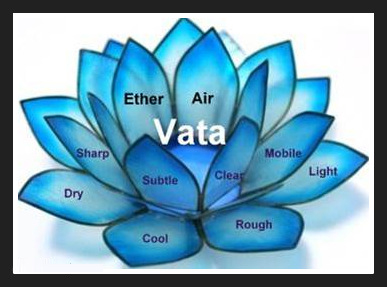
Table of Contents
Introduction:
Through the lens of Ayurveda, an ancient Indian system relating to medication, it is the equilibrium of the entire body and mind which is given utmost significance. According to the Ayurvedic science one of the three basic principles, Vata Dosha, manifests itself as a dynamic energy, which is responsible to regulate many physiological activities of the body. Let’s study what Vata Dosha stand for here.
What is Vata Dosha?
Dosha in Ayurvedic terms can be said to be the guiding forces that regulate the different facets of our life.Vata is regarded as one of the doshas and its element are air and space. Vata means mobility and interactions within the body, thus Vata takes care of the functions of respiration, circulation, and bowels.
Qualities of Vata:
The elements of Vata are portrayed through a number of qualifiers and it is advisable for people to acquire a knowledge of these to help identify imbalances among the elements. Vata is dry, unsubstantial, cold, brittle, delicate, and has a drifting nature. They affect the way a person holds his/her body and posture and also his/her thinking patterns and emotions.
Balancing Vata:
Balanced Vata sparks creativity, vitality, and enthusiasm. Vata is often healthy when it is in balance, but when there is a surplus in Vata, people might get sick. Ayurveda supports to be persistent with the Vata imbalance by introducing certain changes on the lifestyle, food, and so on. Soft and nurturing foods, regulated and calmaneous procedures in terms of routine and staying adequately hydrated and will stabilize the imbalance in Vata.
Signs of Imbalanced Vata:
When the ratio of the three doshas is “normal”, the Vata allow the body to function in harmony. Physical symptoms like dehydrated skin, constipation, joint pain and an irregular system are also obvious. There arise the tendency to be emotional when Vata is imbalanced; this imbalance may lead to anxiety, agitation, and difficulty in concentrating.
Lifestyle Practices for Vata Balance:Lifestyle Practices for Vata Balance:
Ayurveda sees the individual’s balanced state with Vata as being achieved by the practice of some simple living. Establishing rituals, making room for warm and nourishing foods, dressing comfortably and remembering grounding exercises like yoga and meditation will be the best for Vata types.
Nurturing the Mind:
For Vata controls mental functions like thought; therefore, mental health would be of high value. Soothing practices like meditation, deep breathing, or simply spending time in the nature will put things you need on-edge and airy Vata into balance.
Vata-Pacifying Diet:
Having the background of the foods comprised of warmth, moisture and better digestion is a must for pittas. Warmly-cooked bowls of soup that includes grains as well as root vegetables like carrots, and herbal teas can be a source of warmth and a good choice for the majority of Vata types of individuals.
Conclusion:
Ayurveda is after its well-about weave of threads, by which we can acquire a great tool of keeping our health safe and being in harmony with ourselves. Indian Ayurveda is based on the fact that each individual has one life force called Vata. Thus, the process of identifying the signs of excess Vata and practicing daily activities that restrict the buildup of Vata helps individuals to keep harmony in their bodies and minds.According to Ayurveda the health is the integral part of personality and depends upon the integration of all the three planes comprise each human being’s life: physical, mental and spiritual.
The Crunchy Marvel: The Wonders of Carrots in Simple Terms
Contrary to common belief carrots, alongside the universally known yellow from starch, they are not just a tasty element to bring to your plate but more than that, they hide a jesuit of treasure when it comes to their health benefits. We start this journey to dive into the wonders of carrots’ goodness and how simple it is for us to be healthy in everyday language.
HEALWELLHUB
"Heal. Thrive. Unit





Leave a Reply